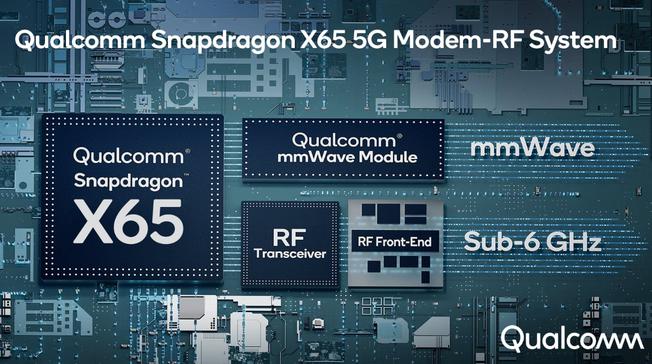Qualcomm has updated its Snapdragon X70 5G chipset to extend range and balance the transmit power for better performance. It also claims the Snapdragon modem will be the first to support a standalone 5G mmWave connection once it is available.
The wireless chipmaker announced its Snapdragon X70 5G Modem-RF System at the Mobile World Congress show in Barcelona this February, but appears to be extending its capabilities before devices based on it have even started shipping.
Some of these are based on Smart Transmit 3.0 technology, the latest incarnation of a Qualcomm technology that was developed to tune transmission speeds while staying within radio frequency power limits.
"Qualcomm Smart Transmit technology is a technology that we developed years ago to optimize the management and the transmission of information from the device to the base station," said Ignacio Contreras, Qualcomm senior director for product marketing. "It manages the peaks and valleys in transmission, according to the power envelope, to be able to optimize coverage and performance."
With this new release, Smart Transmit now extends this management to Wi-Fi and Bluetooth power as well as the cellular radio transmitter, enabling real-time averaging of transmit power across 2G to 5G, mmWave, Wi-Fi (including Wi-Fi 6, 6E and 7), plus Bluetooth radios.

The idea is to extend 5G coverage and improve uplink speeds, providing faster and more reliable connectivity for mobile devices equipped with it.
The wireless chipmaker is not just targeting smartphones and laptops with the new modem, but fixed wireless access equipment, industrial machines, and more.
Qualcomm is also claiming that the Snapdragon X70 is the first 5G RF modem to be capable of operating in standalone mmWave mode, which means that it does not require a connection to be established first on a conventional sub-6GHz band before switching over to mmWave frequencies above 24GHz.
"This means that for the first time, 5G can operate solely on millimeter wave spectrum," said Contreras.
He added that this made it possible for telcos to deploy 5G not just in cellular networks, but for fixed wireless access promising similar speeds to fiber network connections: Qualcomm showed a slide claiming a peak speed of 8.3Gbps for the Snapdragon X70.
This only applies in those territories where the extreme high-frequency mmWave frequencies – between the super high frequency and the far infrared bands – are available for wireless access, of course. In places like the UK, 5G is typically being deployed using frequencies up to 3.8GHz, similar to existing mobile network frequencies.
These announcements were made at Qualcomm's 5G Summit, where the company also discussed other features in the Snapdragon X70 5G Modem, such as the Qualcomm 5G AI Suite, which uses machine learning to improve coverage and throughput. Qualcomm cites figures of up to a 20 percent range improvement for mmWave operating in dense urban environments, and up to a 73 percent improvement in throughput in sub-6GHz 5G networks.
Qualcomm said that the Snapdragon X70 is currently sampling to customers, and commercial availability of mobile devices based on the platform are expected by late 2022. ®
Get our Tech Resources








